| Description: |
Calycosin, a selective estrogen receptor modulator, is also a vasorelaxant and a noncompetitive Ca(2+) channel blocker. It has anti-oxidative, anti-inflammatory, hepatoprotective,antineoplastic, and effective skin-lightening activities. Calycosin exhibited tyrosinase inhibitory activity with an IC(50) value of 38.4 microM, it suppressed breast cancer cell growth via ERβ-dependent regulation of IGF-1R, p38 MAPK and PI3K/Akt pathways. |
| Targets: |
Bcl-2/Bax | Caspase | Akt | FXR | STAT | p38MAPK | ERK | JNK | PI3K | IGF-1R | Calcium Channel |
| In vitro: |
| Cell Physiol Biochem. 2015;35(2):722-8. | | Calycosin and Genistein Induce Apoptosis by Inactivation of HOTAIR/p-Akt Signaling Pathway in Human Breast Cancer MCF-7 Cells.[Pubmed: 25613518] | Calycosin and genistein are the two main components of isoflavones. Previously, we reported that these compounds display antitumor activities in the breast cancer cell lines MCF-7 and T47D. In the present study, we investigated the mechanism of action of Calycosin and genistein, and their respective efficacies as potential therapies for the treatment of breast carcinoma in the clinic.
METHODS AND RESULTS:
MCF-7 cells were treated with Calycosin or genistein. Cell proliferation and apoptosis were measured using CCK8 assay and Hoechst 33258. The expression level of phosphorylated Akt protein was determined by western blotting. Expression level of HOTAIR was quantified by real-time PCR.
Both Calycosin and genistein inhibited proliferation and induced apoptosis in MCF-7 breast cancer cells, especially after treatment with Calycosin. Treatment of MCF-7 cells with Calycosin or genistein resulted in decreased phosphorylation of Akt, and decreased expression of its downstream target, HOTAIR.
CONCLUSIONS:
Calycosin is more effective in inhibiting breast cancer growth in comparison with genistein, through its regulation of Akt signaling pathways and HOTAIR expression. | | PLoS One. 2014 Mar 11;9(3):e91245. | | Calycosin suppresses breast cancer cell growth via ERβ-dependent regulation of IGF-1R, p38 MAPK and PI3K/Akt pathways.[Pubmed: 24618835] | We previously reported that Calycosin, a natural phytoestrogen structurally similar to estrogen, successfully triggered apoptosis of estrogen receptor (ER)-positive breast cancer cell line, MCF-7.
METHODS AND RESULTS:
To better understand the antitumor activities of Calycosin against breast cancer, besides MCF-7 cells, another ER-positive cell line T-47D was analyzed here, with ER-negative cell lines (MDA-231, MDA-435) as control. Notably, Calycosin led to inhibited cell proliferation and apoptosis only in ER-positive cells, particularly in MCF-7 cells, whereas no such effect was observed in ER-negative cells. Then we investigated whether regulation of ERβ, a subtype of ER, contributed to Calycosin-induced apoptosis in breast cancer cells. The results showed that incubation of Calycosin resulted in enhanced expression ERβ in MCF-7 and T-47D cells, rather than MDA-231 and MDA-435 cells. Moreover, with the upregulation of ERβ, successive changes in downstream signaling pathways were found, including inactivation of insulin-like growth factor 1 receptor (IGF-1R), then stimulation of p38 MAPK and suppression of the serine/threonine kinase (Akt), and finally poly(ADP-ribose) polymerase 1 (PARP-1) cleavage. However, the other two members of the mitogen-activated protein kinase (MAPK) family, extracellular signal-regulated kinase (ERK) 1/2 and c-Jun N-terminal kinase (JNK), were not consequently regulated by downregulated IGF-1R, indicating ERK 1/2 and JNK pathways were not necessary to allow proliferation inhibition by Calycosin.
CONCLUSIONS:
Taken together, our results indicate that Calycosin tends to inhibit growth and induce apoptosis in ER-positive breast cancer cells, which is mediated by ERβ-induced inhibition of IGF-1R, along with the selective regulation of MAPK and phosphatidylinositol 3-kinase (PI3K)/Akt pathways. |
|
| In vivo: |
| J Neurol Sci. 2014 Apr 15;339(1-2):144-8. | | Downregulated RASD1 and upregulated miR-375 are involved in protective effects of calycosin on cerebral ischemia/reperfusion rats.[Pubmed: 24548484 ] | Isoflavone Calycosin is a typical phytoestrogen extracted from Chinese medical herb Radix Astragali. It has been reported that estrogens could provide neuroprotective effects, and dietary intake of phytoestrogens could reduce stroke injury in cerebral ischemia/reperfusion (I/R) animal models.
METHODS AND RESULTS:
In the present study, we investigate the molecular mechanisms underlying the neuroprotective effects of Calycosin on middle cerebral artery occlusion (MCAO) rats. Focal cerebral ischemia was induced in male rats by MCAO, neurological deficits and brain edema was evaluated after 24h of reperfusion. The results shown Calycosin significantly reduced the infarcted volume and the brain water content, and improved the neurological deficit. To provide insight into the functions of estrogen receptor (ER)-mediated signaling pathway in neuroprotection by Calycosin, the expression of miR-375, ER-α, RASD1 (Dexamethasone-induced Ras-related protein 1) and Bcl-2 was determined by RT-PCR or western blot assay. Calycosin exhibited a downregulation of RASD1, and an upregulation of ER-α, miR-375 and Bcl-2.
CONCLUSIONS:
Our finding illustrated that Calycosin had been shown neuroprotective effects in cerebral ischemia/reperfusion rats, and the molecular mechanisms may correlate with the positive feedback between ER-α and miR-375, along with the regulation of downstream targets. | | Acta Pharmacol. Sin., 2006, 27(8):1007–12. | | Calcium channel blocking activity of calycosin, a major active component of Astragali Radix, on rat aorta.[Pubmed: 16867251] | To investigate the vasoactivity of Calycosin, a major active component of Astragali Radix.
METHODS AND RESULTS:
Experiments were performed on isolated rat thoracic aortic rings pre-contracted with phenylephrine (PHE) or KCl.
Calycosin produced a concentration-dependent relaxation on the tissue pre-contracted using PHE with 4.46+/-0.13 of pD(2) and 95.85%+/-2.67% of E(max); or using KCl with 4.27+/-0.05 of pD2 and 99.06%+/-2.15% of Emax, and displaced downwards the concentration-response curves of aortic rings to PHE or KCl. The relaxant effect of Calycosin on denuded endothelium aortic rings was the same as on intact endothelium aortic rings, and its vasorelaxant effect was not influenced by L-NAME or indomethacin. In Ca(2+)-free solution, Calycosin (30 micromol/L) did not have an effect on PHE (1 micromol/L)-induced aortic ring contraction. The effects of Calycosin and nifedipine where somewhat different; Calycosin decreased aortic ring contractions induced by the two agonists, but nifedipine displayed a more potent inhibitory effect on KCl-induced contractions than on PHE-induced contractions, and the vascular relaxing effects of Calycosin and nifidipine were additive on PHE-induced contraction but not KCl-induced.
CONCLUSIONS:
Calycosin is a vasorelaxant. Its action is endothelium-independent and is unrelated to intracellular Ca(2+) release. It is a noncompetitive Ca(2+) channel blocker. The effect of Calycosin on Ca(2+) channel blockade may be different from that of dihydropyridines. This study demonstrated a novel pharmacological activity of Calycosin, and supplied a theoretic foundation for Astragali Radix application. |
|


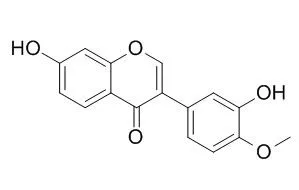

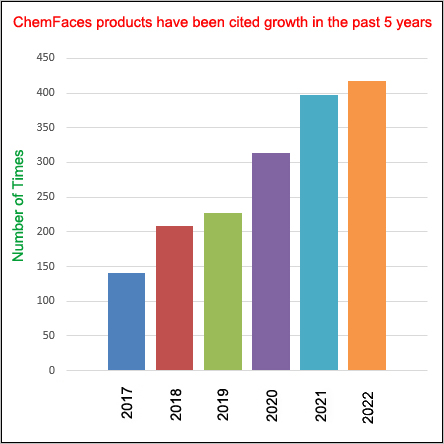
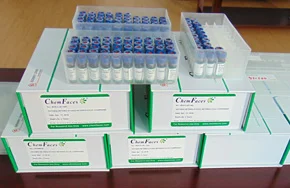
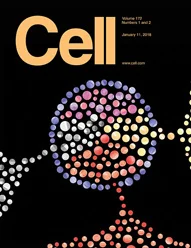 Cell. 2018 Jan 11;172(1-2):249-261.e12. doi: 10.1016/j.cell.2017.12.019.IF=36.216(2019)
Cell. 2018 Jan 11;172(1-2):249-261.e12. doi: 10.1016/j.cell.2017.12.019.IF=36.216(2019)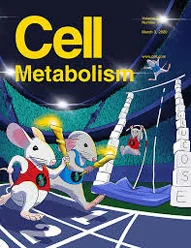 Cell Metab. 2020 Mar 3;31(3):534-548.e5. doi: 10.1016/j.cmet.2020.01.002.IF=22.415(2019)
Cell Metab. 2020 Mar 3;31(3):534-548.e5. doi: 10.1016/j.cmet.2020.01.002.IF=22.415(2019)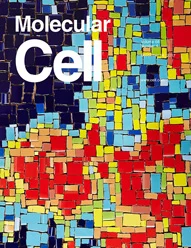 Mol Cell. 2017 Nov 16;68(4):673-685.e6. doi: 10.1016/j.molcel.2017.10.022.IF=14.548(2019)
Mol Cell. 2017 Nov 16;68(4):673-685.e6. doi: 10.1016/j.molcel.2017.10.022.IF=14.548(2019)